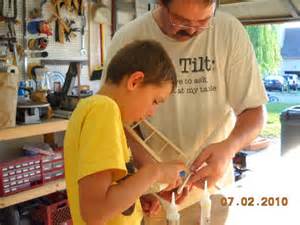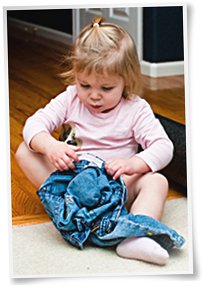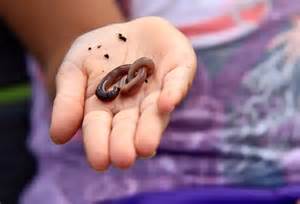Why Doing “With” Kids Is Way Better Than Doing “For” Them
Kids who grow up making and doing with parents have a certain respect for what life demands. But without the resentment. They don’t fall apart at the least little stress put upon them. And they will be able to strive hard. Harder than kids whose parents do everything for them. And that is something to be proud of.
The truth is, it’s a lot more satisfying when kids and parents make – and do – together.
Sure, I believe in surprises. But I learned the hard way not to impose my parental expectations on my kids.
Whatever you make, leave room for the child’s reaction. Don’t take ownership.
And don’t take it personally if the amazing project you just spent 40 hours creating doesn’t work out as planned. It could break, or, if it’s clothing, it may not fit just right. If it’s a science project, the teacher may not appreciate it.
Or, it could melt.
One Christmas Eve I worked until four in the morning stitching away at a Cabbage Patch doll with rust-colored yarn for hair and hand-painted sky-blue eyes.
It was for my three-year-old and she named her doll Sally.
A few months later my daughter put Sally to bed in a hot oven.
Sally melted.
Yes, my little girl was sad.
I was even sadder.
But it didn’t diminish my pleasure in making things for her or the other three kids. I still made magic wands and a hobby horse and dresses and Halloween costumes year after year.

Even if the kids end up destroying whatever it is – as was the case with the Estes rockets my husband built with our two boys – the time hasn’t been wasted.
The goal should be positive interaction: bonding time, learning, and fun.
For toddlers, “doing with” means getting down on the floor and being on the same page. It means helping a little one build a choo-choo train with blocks.
It’s called having “contingency” with them. (Con: Latin prefix, meaning “with or together.” Gen: Latin root meaning “giving birth” or “people.”)
You are “giving birth” to ideas “together.”
This is how young children learn to take initiative. They’re in the driver’s seat and you’re along for the ride. They know you’re on board with what they’re thinking and doing.
It’s also an opportunity to boost your tot’s language skills (and future reading scores) by adding to his or her knowledge of word meaning. “Here comes the caboose! (then embed the definition in your dialogue) – at the very end of the train!”
What could be better?
And at the same time, you are involved in eye contact, touch, and focused attention, all of which spell love to any child.
Clothing and Getting Dressed
First, show your child how it’s done. Watc h them practice. Don’t be in a hurry. Shower them with praise. Accept less than perfect.
h them practice. Don’t be in a hurry. Shower them with praise. Accept less than perfect.
By three-and-a-half, most children can put on their underwear, pants, shirt, shoes and socks.
The problem arises when there is too much to accomplish, and Mommy and Daddy must rush. The parents take over and the child is forced to let someone dress him when he is quite capable of dressing himself.
This is the reason so many tearful battles happen around transitions.
Young children need extra time, and a calm atmosphere, to be able to focus. If the TV is on, or there is no clear routine or structure, parents feel they must constantly remind the child to get going. Every morning is like reinventing the wheel because the child is overwhelmed, just like the parents.
This is totally unnecessary.
But planning is. Set the alarm for thirty-minutes earlier. Let the children help pick out their clothing the night before. Once they take responsibility for dressing themselves, you can move on to helping them make their own bed and other helpful tasks.
Remember, you want to empower, not disable your children.
Making with Kids in the Kitchen
My kids spent lots of time with me in the kitchen. By the time they went to college, they could cook.
Enough to survive, anyway.
Bringing children into the kitchen must start early. Don’t wait until they’re twelve or fifteen. 
I had an empty cabinet where the baby could climb in and play with pan lids and plastic cups while I cooked. And later on they’d wrestle a chair to the kitchen counter to stand next to me while I whipped up dinner.
I made lots of homemade bread and always gave the kids a piece of dough to make a loaf of their own. I loved to watch their little dimpled hands patting and kneading.
And then we’d poke their initials in the top of the loaf.
By the time the loaves came out of the oven, the letters were nearly gone, swallowed by the rising dough. But the kids could still tell which one was theirs.
Children need memories like this, doing and making with someone they love.
It’s not just a body-feeding experience. It’s a soul-feeding experience.
Snapping green beans.
Peeling potatoes.
Cutting out biscuits.
Measuring.
Spinning salad.
Setting the table.
Not alone, but with you.
Homework
Kids need to know that their learning time is more important to you than American Idol or Hell’s Kitchen.
Ask them what they need. Assure them that you’ll answer their questions (not do it for them!) or help locate the necessary resources.
Make sure they know you’re on their team.
Have contingency.
Before the internet we went to the library. I remember sitting beside my youngest child at her homemade Formica desk and teaching her how to write a report.
She only used the one nonfiction book she’d checked out from the library, but that was enough for a seven-year-old.
She was in second grade.
I know encyclopedias are now online. But there is nothing, NOTHING, as beneficial as having an actual set of encyclopedias available in the home
A child can access these without assistance.
The heavy feel of the book in your child’s hands, the beautiful pictures.
Heck, my two-year-old learned to read the alphabet looking up “Babies,” “Cats,” and “Dogs.”
And together, parents and children can find out what the child wants to know right now. The child can go back to the books again and again.
Not a website. Websites are like fast-food. They have no Zen.
Books have Zen.
Parents and children bond through books like they bond by making food together in the kitchen.
I remember when my teenagers were very busy with home work, practice, relationships, applying for college. I wanted to help them.
But sometimes they didn’t want my help. What they wanted was healthy food, a listening ear. A ride. Tuition money.
It all depends on their developmental needs.
By doing “with” your children, you are showing them that someone important believes in their potential. They needn’t be afraid of “becoming” more than they are at this very moment. Growth, learning, change – it’s all good. You’re there to help them through it. FFG







Leave a Reply